Ten years ago, the sequel to Batman Begins came racing into theaters and changed things forever. Years of word-of-mouth about its predecessor, a sustained viral marketing campaign emphasizing Joker’s return to the big screen, and public attention following the tragic death of Heath Ledger, meant the film was sure to be a huge success, but no one could really be prepared for how much of a cultural phenomenon The Dark Knight became.
A two-and-a-half hour crime epic, The Dark Knight is an emotionally exhausting film that shocked and moved audiences by asking them how they would respond to unrelenting, irrational evil. Its very title became a byword for how relevant and insightful a superhero film could be and it has cast a long shadow on every comic book movie since. To celebrate the 10th anniversary, here are ten personal thoughts that probably barely scratch the surface on the film.
A Magic Trick

Let’s get the obvious of the way: Heath Ledger was absolutely extraordinary as the Joker. It’s very hard to think about The Dark Knight without remembering his tragic death on January 22, 2008. Yet Ledger completely disappeared into the role: the black make-up alone made his small eyes look far more arresting than usual. It’s still hard for me to believe the stoic star of A Knight’s Tale and Brokeback Mountain could bring such enthusiasm and wild abandon to the Joker.
There is a wonderful spectrum of emotions he brought to his performance. Every time I watch the film, I’m struck by his little nuances to humanize (and thereby accentuate) the monster he played. When I think of Ledger’s Joker, I think of how hurt and defensive he is after Gambol calls him crazy or the childlike honesty with which he taunts Detective Stephens about the colleagues he savored murdering with his knife. There’s something oddly affable about him, which makes it more unnerving when he roars or threatens people. He’s seductive, and that’s far more interesting than this one-dimensional beast he’s come across as in the comics over the years.
I feel Ledger brought his own vulnerability — that unease with which he was initially typecast as a Hollywood heartthrob — to the role. There’s a real feeling of pain, of disappointment beneath those contradictory backstories he tells. It’s somewhat saddening, in retrospect, that his most cited role showcased feelings of nihilism or a death wish which may or may not have reflected those he might’ve had. It’s disheartening how in real life, Ledger didn’t have a Batman going out of his way to prevent his death.

“A year ago…”
One of the most surprising aspects about The Dark Knight is how quickly it picks up from Batman Begins. Given how the box office dwarfed that of the first film, it’s fascinating to consider how many audience members watching the movie had no idea why Bruce Wayne was living in a penthouse apartment rather than Wayne Manor. Christopher Nolan could’ve easily skipped ahead a few years to when the Manor was rebuilt, where Batman already has a new suit, and Gordon is Commissioner. He could’ve ignored the loose end of the Scarecrow or had Rachel Dawes go the way of every previous Batman love interest following Katie Holmes’s departure, but he was truly dedicated to continuing the story he began, and building on an emotional investment in that film.
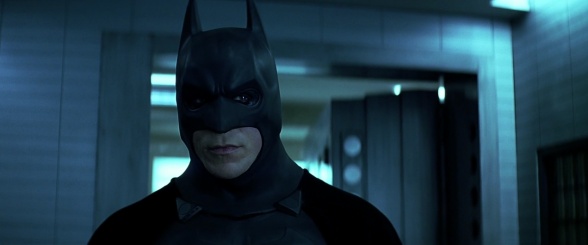
What Nolan created in The Dark Knight is a world that’s instantly familiar to anyone who knows anything about Batman, immediate and ever-changing, often uncontrollable. Batman’s secret identity, his car, not even his uniqueness, is safe or set in stone. And there’s the biggest question Nolan raises and poses about the character: must there always be a Batman? If The Dark Knight were set a few years after Batman Begins rather than within a year, it would be a film about Bruce being frustrated with his lack of progress and the question of whether he could pass on his crusade to someone like Harvey Dent would be a moot point. Nor perhaps, would the Joker be such a relentless and infuriating affront to his success cleaning up Gotham.
Continued belowThe Bat-Kitchen Sink
Nolan’s approach to building the ultimate Batman movie was by examining and exploring every possible idea for the character. As such, The Dark Knight is chock full of imagery from the comics that Nolan couldn’t put in the first film, like the Joker escaping prison or killing someone close to Wayne. We get to see Batman as a detective, working to reconstruct a fingerprint on a shattered bullet. We even get a slight homage to the Sons of Batman from Frank Miller’s “The Dark Knight Returns” (1986) with the Batman imitators. The whole surveillance subplot is, superficially speaking, one huge justification for Batman’s trademark white eyes from the comics and cartoons.
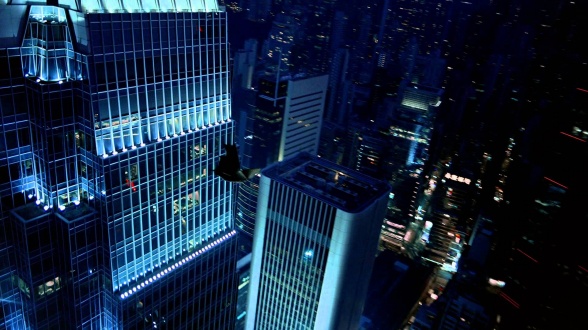
If there’s a flaw to the movie, it’s the Hong Kong section. Taking Batman (not Bruce Wayne) outside the US is a valid and exciting idea, but in a movie where Bruce is so intrinsically tied to Gotham City, the whole excursion sticks out like a sore thumb. To Nolan’s credit, the sequence is woven tightly into the film’s storyline, with the Joker’s quip that “Batman has no jurisdiction” perfectly explaining why the mob turn to him for help. Ultimately however, justifications like those stand out in contrast to how there’s no need to explain the villain’s apparent omnipresence, a reminder that the film only goes to Hong Kong because Nolan wanted to shoot there. As it is, the sequence is, dare I say, a rare moment of self-indulgence from the director, whose narratives are usually precision aimed.
Harvey Two-Face
Harvey Dent’s introduction in the film is a great example of a classic moment from the comics being depicted and subverted: rather than being hit with acid smuggled into a courtroom, Dent is confronted with a gun, which he expertly and heroically disarms.
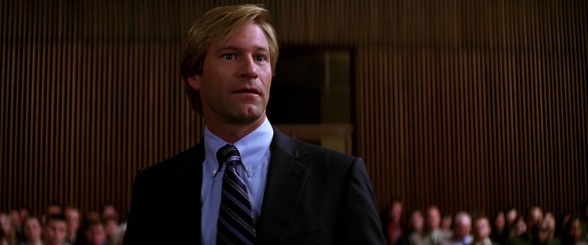
It’s an early sign that the film’s version of Two-Face is a very different one from the comics. As strong as they were, Batman: The Animated Series or Jeph Loeb and Tim Sale’s limited series “Batman: The Long Halloween” gloss over how Harvey Dent goes from being a heroic district attorney to a mob boss obsessed with the number two. Nolan sidesteps that completely, depicting Dent as a vengeful killer who comes to embrace the Joker’s twisted worldview, rather than transforming him into another flamboyant supervillain.
Nolan recognizes that it’s not Two-Face’s split personality or bizarre taste in fashion that makes him so fascinating, but that it’s his history with Batman, and how his descent into madness is the hero’s first (and perhaps greatest) failure. He becomes what Bruce could have been in Batman Begins, a gun-toting murderer of the criminal underworld, lacking the years of wisdom and understanding he acquired in that film. Harvey Dent is a handsome, privileged man who sees himself as the one to fix Gotham, and is quick to lose his temper when things don’t go his way, especially at Gordon, who he constantly lectures about the compromised cops in his department.
Make no mistake, The Dark Knight is a Two-Face story at its core: the title of the film itself refers to both Batman and Dent, Gotham’s White Knight who has fallen into darkness. As screenwriter Todd Alcott remarked in his analysis of the film, “When folks complain that Two-Face isn’t in the movie enough, I think what they mean is that the cool special-effects makeup isn’t in the movie enough.”

The screenplay has a symmetry to it that reflects Dent’s dual nature: for example, when Gordon is believed dead, Batman threatens Sal Maroni for the Joker’s whereabouts calmly and methodically. Dent, meanwhile, kidnaps and threatens to kill a mental patient (David Dastmalchian, in the first of many comic book roles), whom the Joker took advantage of. The entire social experiment with the two ferries at the film’s end is a plot worthy of Two-Face in the comics, but one devised by the Joker in the film, because in Nolan’s universe, the two both become extensions of the same bitter ideology.
One Bad Day
Continued belowOne way to see how the film uses the Joker to tell a story about Two-Face is to consider it an alternative take on Alan Moore and Brian Bolland’s graphic novel “The Killing Joke” (1988). The film is about the Joker bringing Dent down in lieu of Gordon but a lot of the beats are there. Instead of having extensive flashbacks like the comic (or as you would expect from Nolan’s other work), it just leaves Ledger to hint at the possible reasons for his character’s pain and anger.
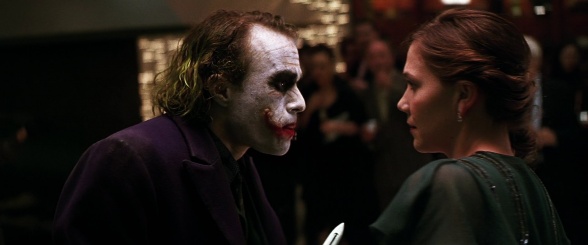
By focusing on the Joker’s victims, The Dark Knight improves on the biggest flaw of the comic, which is how the maiming and sexual assault of Barbara Gordon/Batgirl is only explored from Gordon’s point-of-view. Her own humiliation and agony was never acknowledged and was left to be explored by other writers as they picked up the pieces. The Nolans avoid that with Rachel’s death because it’s less gratuitous and because it has a lasting emotional impact on Bruce and Harvey throughout the rest of the film, and their differing responses to the tragedy serve to reinforce the answer of which one truly is a hero.
It’s a testament to how heroic this version of Batman is that he never contemplates taking the Joker’s life in revenge. Depending on how you interpret the ending of “The Killing Joke,” Batman either kills his nemesis or chuckles along with him. The Dark Knight again improves on this source by not having Batman do anything as creepy or cruel in his final confrontation with the Joker. This version of Batman would never dishonor Rachel’s memory either way, whereas Dent winds up doing both by letting the Joker off the hook, and by becoming a murderer.
“Trying to catch the light?”
The film’s portrayal of Bruce Wayne as a heroic figure is further painted by the decision to stage a few major scenes during the daytime. It’s a choice that can be taken for granted, given how urgent the plot is, but another director and cinematographer could’ve insisted that a Batman picture had to take place primarily at night. Here, the fact Batman only operates when it’s dark is no hindrance to Bruce, who still drives out to help in tense times without his suit of armor.
It’s beautiful that The Dark Knight, which often lives up to its title tonally, is full of moments where the light is often blinding. Think of Batman’s interrogation of the Joker, or the scene where the Joker sways Two-Face to his side, where every crease on the clown’s make-up, or every speck of ash on Dent’s scars, is visible. It’s an enormous difference from Batman Begins, which was much murkier and shadowy, like a comic book, hiding the limitations of the film’s soundstages. Everything feels so much more tactile, like you can reach out and touch Batman’s helmet.
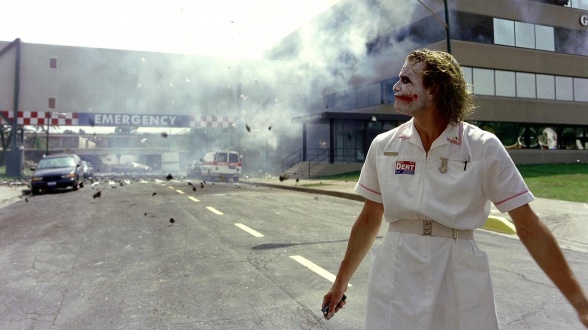
Imagine for a moment, if the destruction of Gotham General Hospital had been shot during nighttime. The sight of the riot, gunshots, and the hospital exploding may have felt less disturbingly lifelike. And it may have caused the sight of Ledger — standing there like Marvin the Martian, wondering where his Earth-shattering kaboom has gone — against incredibly dangerous pyrotechnics, to resemble green screen work instead. The Dark Knight doesn’t feel gritty and realistic because it resembles a moody teenager’s artwork, but because it holds up a mirror to terrorism in our own lives.
“I’ll do what you shoulda did ten minutes ago”
One of the most striking minor lines in the film has to be when a civilian attending Harvey Dent’s press conference yells, “Things are worse than ever!” You must think, “Really? Things were better before Batman was opposing the mob’s stranglehold on the city?” But I perfectly understand why he says that: he’s afraid and expressing his resentment of Batman by trying to pretend things were normal before his arrival. A decade after the film’s release, I get that some people can be more unsettled by protests, riots, and uncivil comments, than the societal injustice that causes them. A decade on, I feel I know what the Joker is talking about here:
Continued belowYou know what I noticed? Nobody panics when things go according to plan. Even when the plan is horrifying. If tomorrow I told the press that, like, a gangbanger would get shot, or a truckload of soldiers will be blown up, nobody panics. Because it’s all part of the plan. But when I say that one little old mayor will die, well then everybody loses their minds!
The Joker warns Batman that “these civilized people, they’ll eat each other,” and when he begins his experiment with the rigged ferries, it seems like his belief that all people are animals like him is about to be vindicated. But the Joker has so little empathy that he fails to predict that, in such a large group, the opposite of the bystander effect occurs, and so it is that an unnamed convict (Tommy “Tiny” Lister) demonstrates that the Joker’s proposal is unworthy of debate.
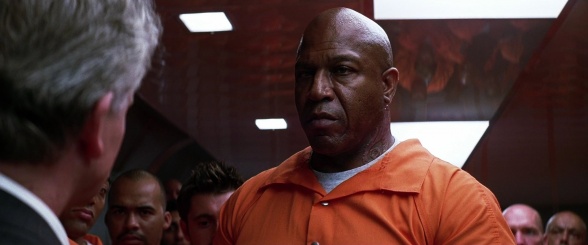
This hulking, intimidating man, who may have been subjected to racism his whole life and become a killer because of it, understands what the civilians on the other ferry take forever to realize. It’s a breathtakingly progressive moment of cinema: perhaps Harvey Dent, the fallen White Knight, is not the second Dark Knight of the film’s title, but this anonymous hero is.
“I’m not a hero”
Whenever I watch The Dark Knight, I find myself overwhelmed by Batman’s display of humility in taking the blame for Dent’s crimes. I feel Christian Bale’s Batman is one of the kindest and most selfless depictions of Batman we’ve ever had: he might bellow “I don’t wear hockey pants!” at one of his imitators, but that’s may be because he recognizes that what he does every night, lashing out like an animal, is the last resort of someone living in a corrupt society, and that they should not try to emulate him.
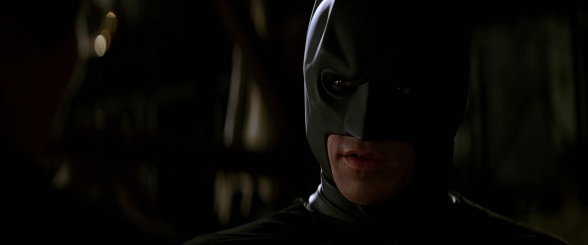
Bruce spends the film propping up a new hero for them to aspire to. Even Harvey Dent’s fall, literal and moral, won’t shake his belief that people mustn’t look up to a violent man like him. When he and Lucius spar over his surveillance project, they are in many ways sparring over the entire idea of Batman, which is “illegal, [and] unethical.” So when Batman intones that “sometimes people deserve to have their faith rewarded,” he torches his own legacy, rather than let the Joker sully Harvey’s reputation.
In life we are so often disappointed when we discover our how our idols and heroes turn out to be two-faced, ignoring everyday folk who save lives day in, day out, never expecting praise for their heroism, and often overshadowed by the appalling minority in the media. Batman believes it should be normal civil servants like Gordon and Dent that should inspire the people of Gotham, not realizing he is the bravest anonymous hero of them all. In adding the cover-up of Dent’s murders to his morally murky repertoire, Batman proves, truly, he too is the Dark Knight.
Kill the Batman
One wonders how the series would’ve played out if Ledger were still alive: would Nolan’s third film have resembled The Dark Knight Rises at all? Would he have felt the need to make it so conclusive? Would the cast of this film have transitioned to a shared DC Cinematic Universe? (I for one, think Ledger’s Joker was so charismatic, that he was the only version that could believably gain a Harley Quinn.) Or would this film’s impact have discouraged them from regularly reprising their roles, in case they diluted the film’s memory?

We’ll never know: what we do know is the thought of someone else playing his Joker was so unbearable, that when Nolan returned, it was to render Batman Begins and The Dark Knight a three-part one-off. As it is, the last shot of the Joker, left literally hanging, is an incredibly haunting and poignant reminder that we never got to see him and Bale’s Batman demonstrate being “destined to do this forever.”
A Shining Knight
Like Alfred to Bruce, The Dark Knight tells me to “endure.” It’s a message that’s arguably more potent now in the midst of the Trump era, as opposed to when the film came out at the tail end of the Bush administration. When the film came out, it felt like people had stopped worrying about terrorism. Now, three years after the attacks in Paris, it feels like more and more people are willing to give up virtues of tolerance, respect, and generosity for some feeling of security. It reminds me that there’ll always be heroes out there, under-appreciated, sometimes despised, but nevertheless always ready to do the right thing, never giving into anger and despair.

As dark as Christopher Nolan’s Batman trilogy is, the films inspire me to hope that there’s something beyond the disappointment of life today, an uncompromising ideal to strive towards, where we all can become brave examples of virtue like Batman. Ultimately, The Dark Knight is a powerful reminder that no matter how bleak life becomes, there’s always hope, or as Dent says before he effectively sacrifices himself, “The night is darkest just before the dawn. And I promise you, the dawn is coming.”



